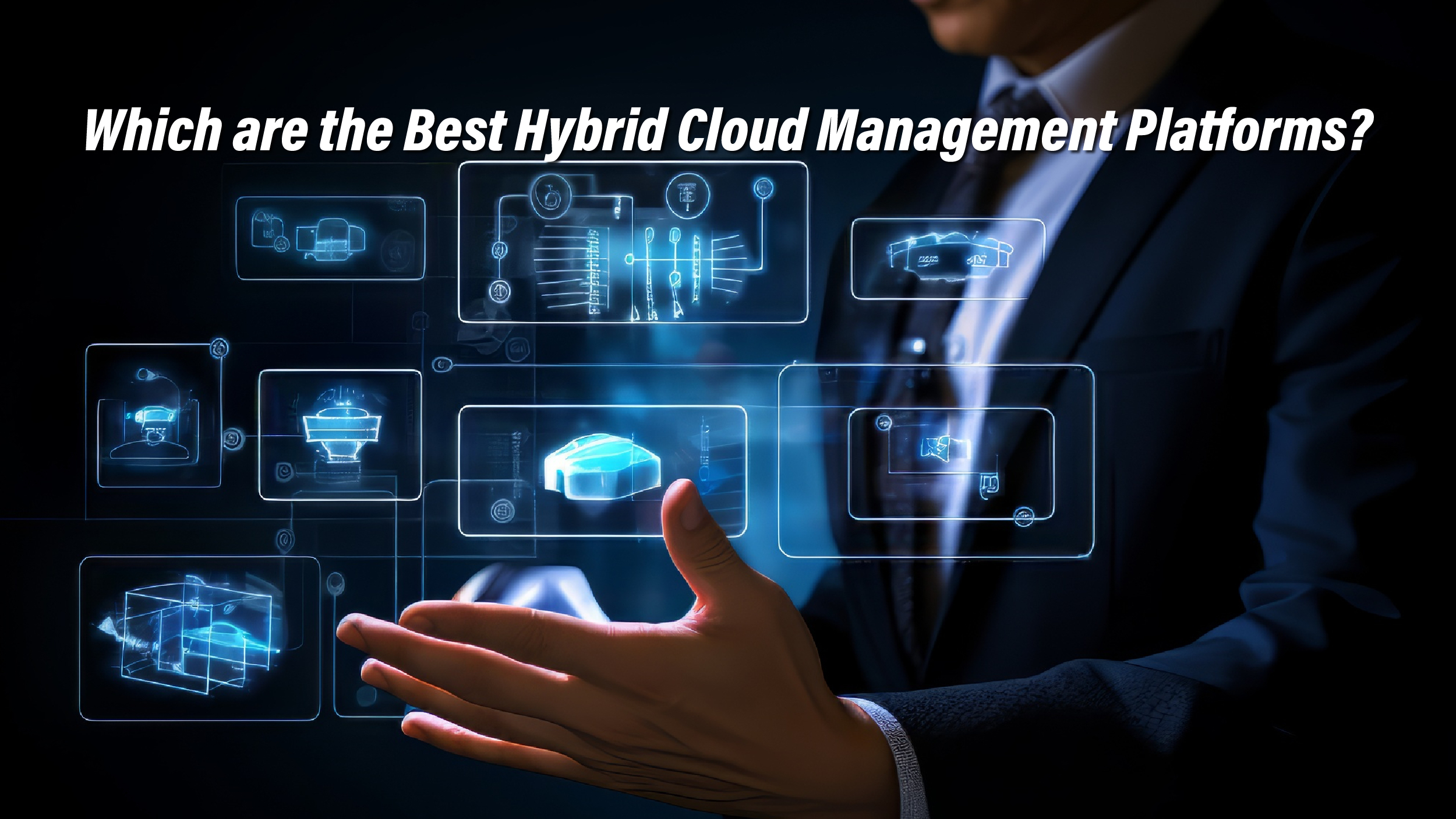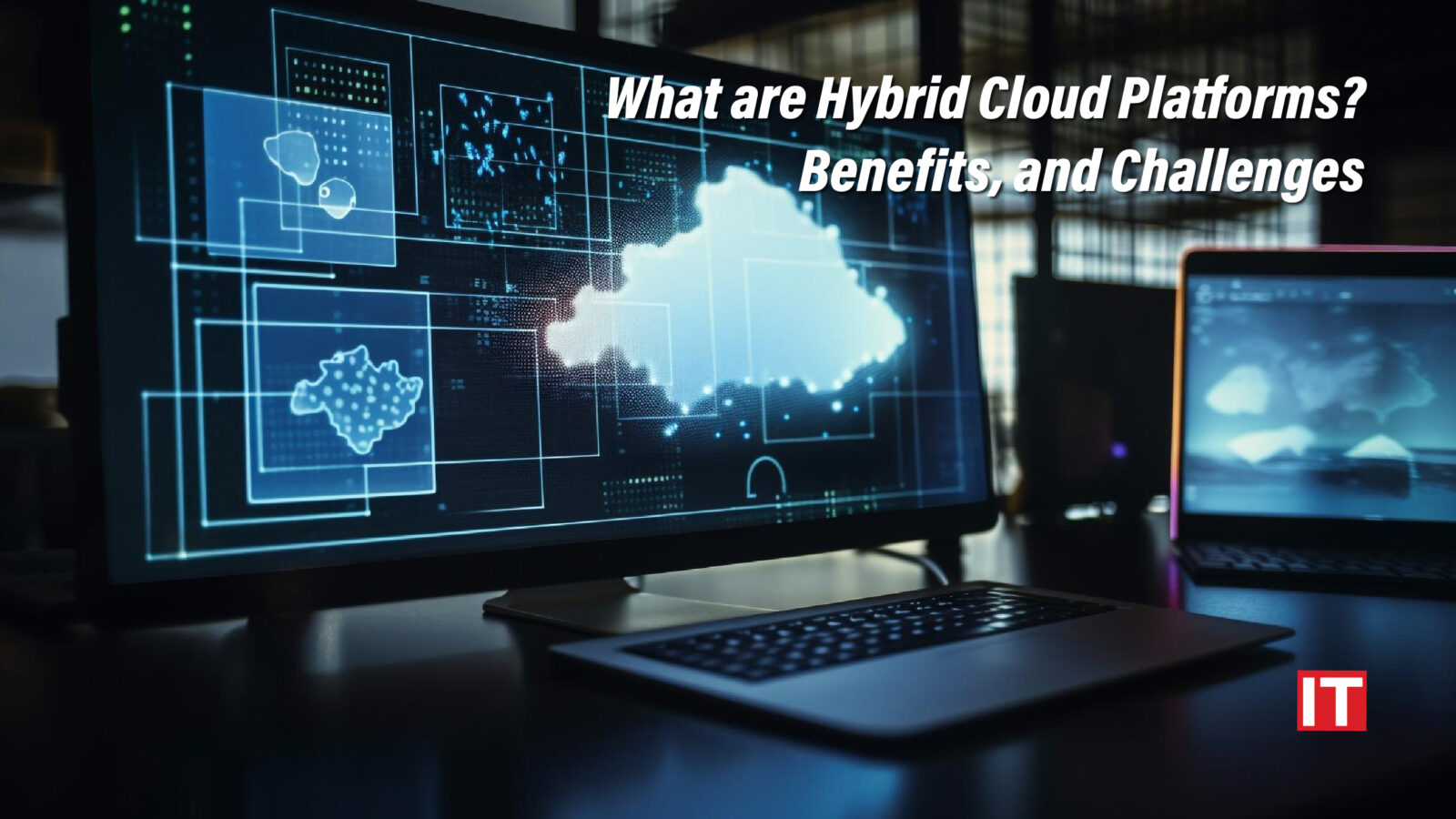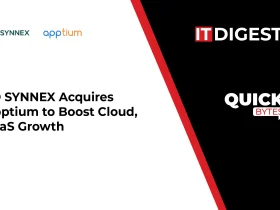In the dynamic landscape of the digital era, businesses grapple with the ongoing challenge of efficiently managing vast amounts of data while pursuing adaptability, scalability, and cost-efficiency. Hybrid cloud platforms is an agile and adaptable solution that combines the strengths of both public and private cloud environments. With its unique fusion of flexibility, security, and scalability, the hybrid cloud has emerged as a transformative asset for organizations seeking to optimize their IT infrastructure and drive innovation.
In this blog post, we’ll dive into the concept of hybrid cloud platforms, explore its advantages, and everything you need to about it.
What is a Hybrid Cloud?
A hybrid cloud serves as a flexible computing environment that integrates different computing, storage, and services from various sources, including public clouds, private clouds, on-premises data centers, and “edge” locations. Its popularity stems from the fact that few organizations rely solely on a single public cloud.
With hybrid cloud solutions, you can seamlessly migrate and manage workloads across diverse cloud environments, tailoring setups to meet your specific business requirements. Many organizations opt for hybrid cloud platforms to reduce costs, mitigate risks, and expand their capabilities to support digital transformation initiatives.
Today, hybrid cloud infrastructure setups are widespread. During cloud migration endeavors, organizations often embrace a hybrid approach to ensure a smooth and gradual transition of applications and data. Enterprise hybrid cloud environments offer the flexibility to utilize on-premises services while leveraging the adaptable storage and accessibility options provided by leading public cloud providers like Google Cloud.
Also Read: A Beginner’s Guide to Cloud Data Analytics: Everything You Need to Know l
Which Are The Best Hybrid Cloud Management Platforms?

Determining the optimal hybrid cloud platforms are subjective and hinges on individual business needs. Below are some notable options:
- Morpheus Data: Morpheus is a cloud-agnostic management platform that centralizes the control of multi-cloud and hybrid IT environments. It empowers DevOps teams with self-service capabilities and supports various deployment models.
- Embotics vCommander: Embotics vCommander is a user-friendly yet robust cloud management platform designed to streamline tasks, cut costs, and enhance cloud deployments. It provides support for multiple hypervisors and virtualization features.
- IBM Turbonomic: IBM Turbonomic offers performance and cost optimization across public, private, and hybrid clouds. It utilizes AI, machine learning, and predictive analytics to ensure continuous optimization of performance, capacity, and costs.
- CloudBolt: CloudBolt is a comprehensive cloud management platform facilitating self-driving IT operations management across private, hybrid, and multi-cloud environments. It delivers unified operations, continuous optimization, and integrated compliance through AI and ML technologies.
When evaluating these platforms, consider factors such as scalability, integration capabilities, self-service options, security features, and cost optimization. Additionally, assessing user feedback, industry reputation, and customer support can aid in making an informed decision.
Challenges Faced by Hybrid Cloud Platforms
Hybrid cloud platforms indeed encounter several challenges that necessitate attention for successful implementation and operation. Some common hurdles include:
- Initial Setup Complexity: Establishing a hybrid cloud environment demands meticulous planning and integration of various cloud and on-premises infrastructures.
- Data Security: Safeguarding data across platforms and locations poses a significant challenge. Organizations must ensure data protection and deploy robust security measures to mitigate risks.
- Multi-Cloud Management: Managing multiple cloud providers and platforms introduces complexities in governance, integration, and orchestration. Effective management and optimization of multi-cloud environments are imperative.
- Migration and Integration: Transferring applications and data from on-premises or single-cloud environments to a hybrid cloud can be resource-intensive and time-consuming. Seamless integration of diverse systems and applications is vital for smooth operations.
- Cost Optimization: Optimizing costs in hybrid cloud setups is challenging due to resource management complexities across platforms. Implementing effective cost management strategies and leveraging automation tools are essential.
- Governance and Compliance: Ensuring compliance with regulations and maintaining governance across hybrid cloud environments is complex. Organizations must employ unified management panels and cloud management platforms to streamline governance processes.
Addressing these challenges necessitates meticulous planning, expertise, and the utilization of suitable tools and technologies.
What are the Benefits of Hybrid Cloud Platforms?

Hybrid cloud platforms present numerous benefits to organizations, enabling them to harness the strengths of both public and private cloud environments. Here are some key advantages:
- Flexibility and Agility: Organizations can select the most appropriate cloud environment for various workloads and applications, seamlessly adjusting resource allocation to meet fluctuating demands and swiftly adapt to changing business requirements.
- Cost Optimization: Hybrid cloud models allow organizations to optimize expenses by leveraging the cost-effectiveness of public cloud services for non-sensitive workloads, while retaining critical data and applications within secure private infrastructure, striking a balance between cost efficiency and performance.
- Security and Compliance: Hybrid cloud solutions offer heightened security and compliance features, enabling organizations to retain sensitive data and vital applications within private infrastructure while utilizing security measures provided by public cloud providers, thereby ensuring regulatory compliance and data control.
- Enhanced Performance: By utilizing the scalability and computing power of public clouds for resource-intensive tasks and keeping latency-sensitive applications on-premises or in private clouds, organizations can achieve improved performance across their hybrid cloud environments.
- Disaster Recovery and Business Continuity: Hybrid cloud platforms provide robust disaster recovery and business continuity capabilities, allowing organizations to replicate critical data and applications across multiple cloud environments, ensuring data redundancy and minimizing downtime during unforeseen disruptions.
- Vendor Lock-in Mitigation: Adopting a hybrid cloud strategy enables organizations to mitigate vendor lock-in risks by leveraging multiple cloud providers and maintaining autonomy over their data and applications, facilitating greater flexibility and the ability to switch providers as needed.
- Unified Management and Orchestration: Hybrid cloud platforms offer centralized management and orchestration capabilities, enabling organizations to efficiently oversee and monitor their entire cloud infrastructure from a single interface, streamlining operations and enhancing overall efficiency.
Final Takeaway
Hybrid cloud platforms offer organizations the best of both worlds by combining the flexibility and scalability of public clouds with the control and security of private infrastructure. By adopting a hybrid cloud approach, organizations can effectively balance their workload requirements, optimize costs, maintain control over critical data, and leverage the advantages of different cloud environments.


































